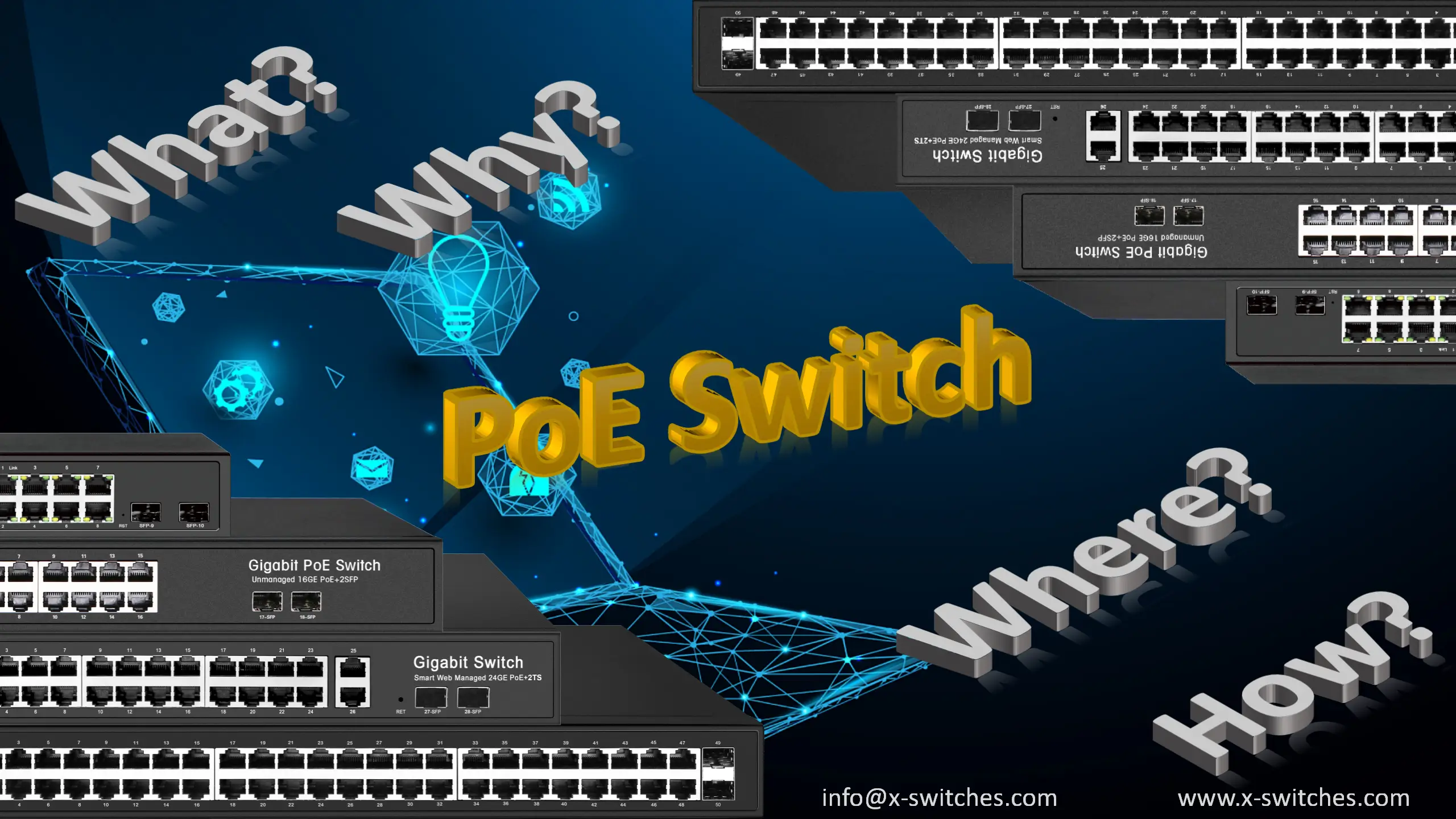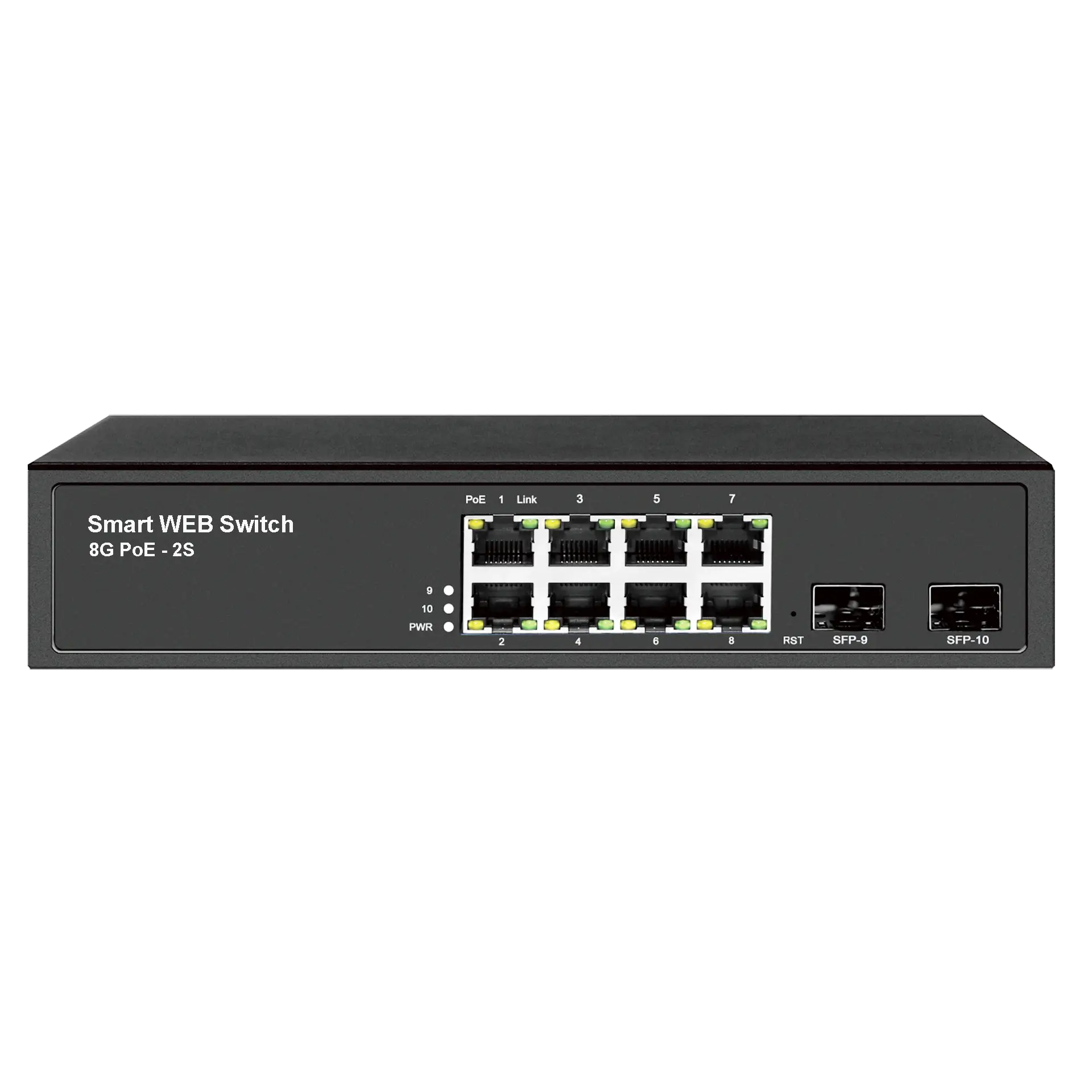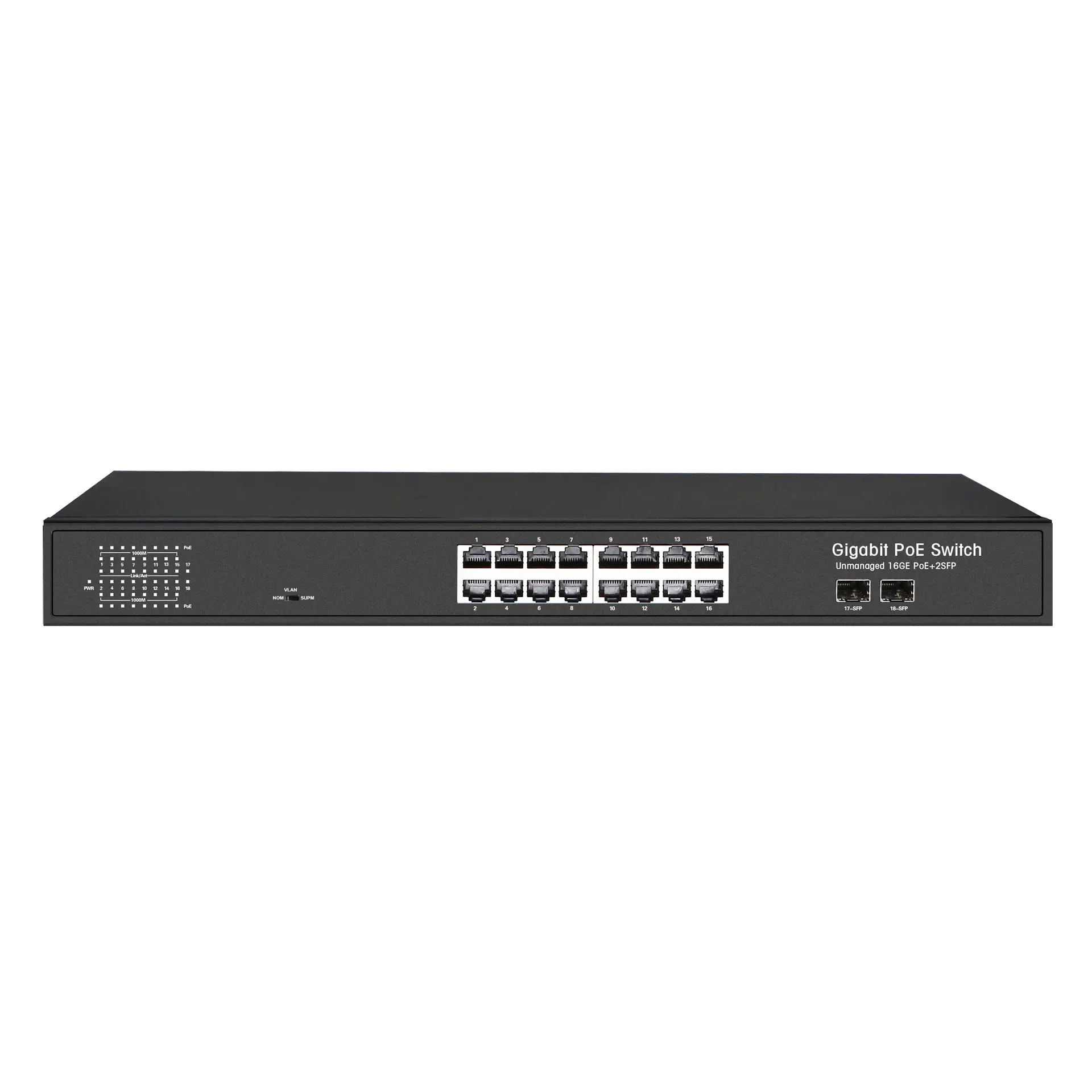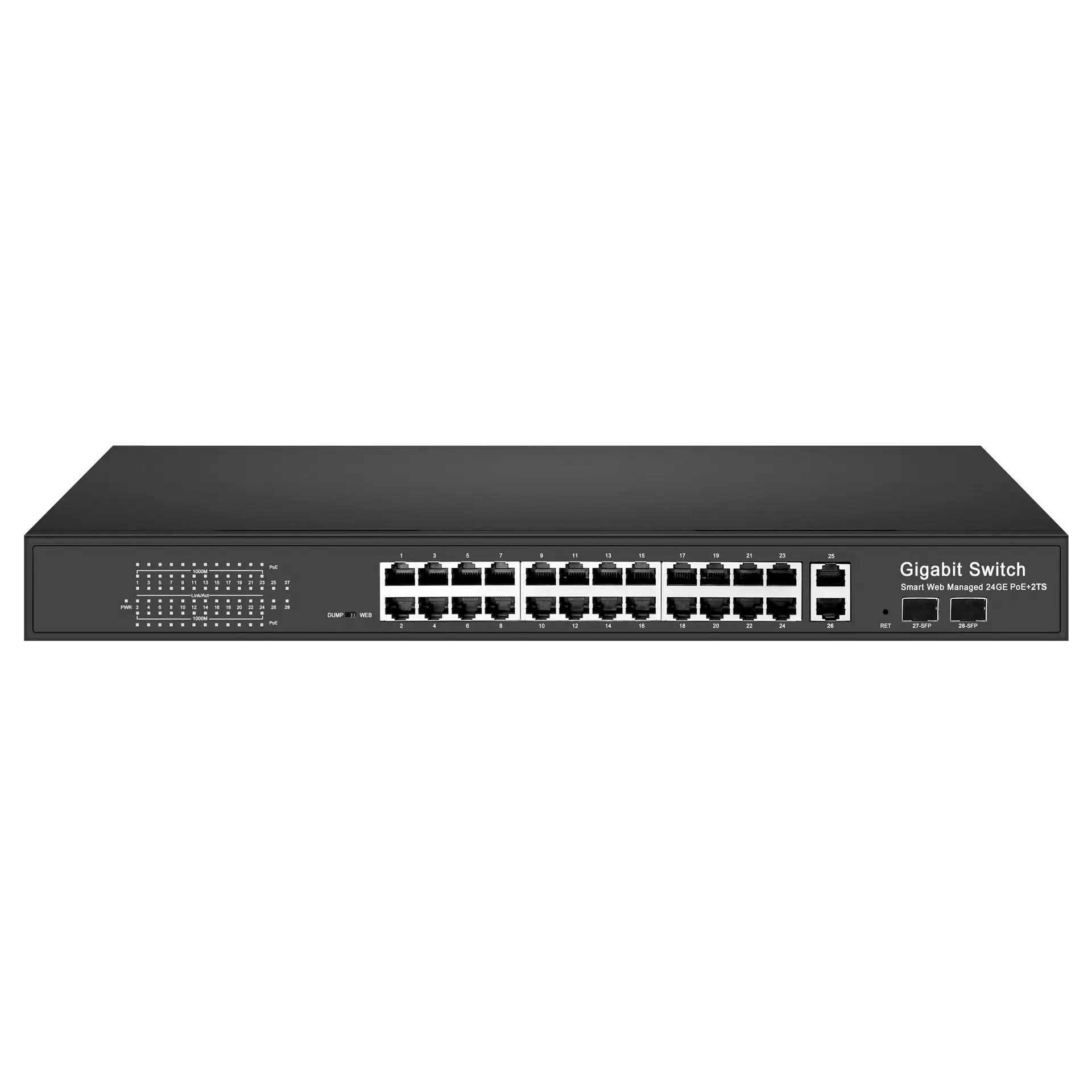PoE Ethernet Switches: The Backbone of Modern Network Infrastructure

In today’s hyperconnected world, X-switches is delighted to be one of the leaders in the industry of PoE Ethernet Switches—a game-changing solution that consolidates power delivery and data transmission into a single, elegant framework.
I. PoE Switch Introduction
As businesses embrace IoT, cloud platforms, and smart technologies, the demand for agile, cost-effective networks has surged. Traditional setups, dependent on separate power and data cables, often lead to clutter, higher costs, and inflexibility. Power over Ethernet (PoE) switches address these challenges by delivering electricity and data through a single Ethernet cable, streamlining deployments and slashing installation complexity.
PoE switches empower organizations to deploy devices like IP cameras, wireless access points, and IoT sensors in hard-to-reach areas without costly electrical work. For instance, a warehouse security camera can operate with just one PoE-enabled cable, reducing downtime and enabling effortless scalability. This flexibility extends to smart offices, industrial automation, and digital signage, where centralized power management ensures reliability and remote troubleshooting.
X-switches breaks down how PoE switches work, their benefits across industries, and critical selection criteria. From optimizing small networks to powering smart city infrastructure, understanding PoE technology unlocks scalable, future-proof connectivity. Discover how these switches simplify networks while driving innovation in an increasingly connected world.
II. What is a PoE Switch?
PoE Ethernet Switch Definition:
A Power over Ethernet (PoE) switch is a networking device that combines data transmission and electrical power delivery over a single Ethernet cable. This eliminates the need for separate power cords, streamlining the deployment of connected devices like IP cameras, wireless access points, and VoIP phones.
PoE technology allows Ethernet cables (e.g., Cat5e, Cat6) to carry both data and electrical power simultaneously. This is achieved by sending low-voltage DC power alongside data signals through the same cable. A PoE switch acts as the central hub, providing power to compatible devices while managing data traffic across the network.
How Does a PoE Switch Work?
PoE switches adhere to IEEE standards that define power delivery capabilities:
IEEE 802.3af (PoE): Delivers up to 15.4W per port, suitable for low-power devices like basic IP cameras or VoIP phones.
IEEE 802.3at (PoE+): Boosts power to 30W per port, supporting devices such as pan-tilt-zoom (PTZ) cameras or advanced wireless access points.
IEEE 802.3bt (PoE++): Provides up to 90W per port, ideal for high-demand equipment like LED lighting systems or industrial IoT devices.
The switch automatically detects PoE-compatible devices and negotiates the required power level, ensuring safe and efficient operation. For non-PoE devices, the switch functions as a standard data-only Ethernet switch.
Basic PoE Network Setup
In a typical setup, a PoE switch connects to multiple devices via Ethernet cables:
IP cameras receive power and transmit video data.
VoIP phones operate without a separate power adapter.
Wireless access points are installed in ceiling voids or remote areas without nearby outlets.
All devices link back to the PoE switch, which is connected to a router or network backbone.
This integration simplifies installations, reduces cabling costs, and enables centralized power management. For example, a security system using a PoE switch can deploy cameras in optimal locations without worrying about proximity to electrical outlets.
X-switches offers full range PoE standards including PoE (802.3af), PoE+ (802.3at), and PoE++ (802.3bt), providing different power levels to meet diverse requirements.
III. Key Benefits of Using a PoE Switch
In an era where efficiency and scalability define successful network infrastructure, Power over Ethernet (PoE) switches have emerged as indispensable tools. By merging power and data delivery into a single cable, these devices address critical challenges across industries. Below are their standout advantages:
1. Simplified Installation
PoE switches eliminate the need for separate power cables and electrical outlets, drastically reducing installation complexity. For instance, deploying an IP camera on a factory ceiling no longer requires hiring an electrician to install a nearby power source—a single Ethernet cable suffices. This cuts labor costs, minimizes cable clutter, and accelerates deployment timelines. Businesses can redirect saved resources toward core operations rather than infrastructure logistics.
2. Flexibility and Scalability
PoE technology liberates devices from proximity to power sources, enabling effortless relocation. A wireless access point in a conference room can be moved to a lobby without rewiring, ensuring optimal coverage as needs evolve. This adaptability is vital for growing IoT ecosystems, where adding sensors, smart lighting, or HVAC controls requires minimal disruption. PoE switches future-proof networks, seamlessly scaling to accommodate new devices without overhauling existing setups.
3. Enhanced Reliability
Centralized power management is a hallmark of PoE switches. Built-in surge protection safeguards connected devices from voltage spikes, while remote power cycling allows IT teams to reboot malfunctioning equipment—like a frozen VoIP phone—without physical access. This reduces downtime and ensures consistent performance, particularly in mission-critical environments like hospitals or security systems.
4. Cost Efficiency
By reducing reliance on electrical wiring and outlets, PoE switches lower upfront infrastructure costs. Maintenance expenses also drop: fewer power adapters mean fewer points of failure, and centralized management simplifies troubleshooting. For example, a university campus using PoE to power hundreds of security cameras and access points saves significantly on both installation and long-term upkeep.
Real-World Impact
From smart offices deploying IoT-driven lighting to industrial plants automating sensor networks, PoE switches from X-switches are transforming connectivity. They empower organizations to build cleaner, more resilient networks while freeing budgets and IT teams to focus on innovation rather than maintenance. As networks grow denser and smarter, PoE technology remains a cornerstone of efficient, scalable infrastructure.
IV. Common Applications of PoE Switches
PoE Ethernet switches have become the backbone of diverse industries by simplifying deployments and enhancing efficiency. Below are four key areas where PoE technology drives innovation:
1. Surveillance Systems
PoE switches are integral to modern security setups. They power IP cameras and Network Video Recorders (NVRs) over a single Ethernet cable, eliminating the need for separate electrical wiring. For example, in a warehouse, cameras mounted on high ceilings or outdoor perimeters can operate seamlessly with PoE, ensuring uninterrupted surveillance. Centralized power management also allows remote rebooting of cameras, reducing downtime during maintenance. This reliability makes PoE ideal for airports, retail stores, and smart city monitoring systems.
2. Business Communications
In office environments, PoE switches support VoIP phones and video conferencing systems, streamlining workplace connectivity. Employees no longer need bulky power adapters for desk phones—PoE delivers both data and power through one cable. Conference rooms benefit too: ceiling-mounted microphones, displays, and collaboration tools can be powered directly from the network switch, creating clutter-free spaces that enhance productivity.
3. Smart Offices
PoE is revolutionizing smart office ecosystems. Beyond Wi-Fi access points, PoE switches energize LED lighting systems, occupancy sensors, and climate controls. For instance, a "green" office might use PoE to adjust lights and HVAC settings based on real-time occupancy data, slashing energy costs. IoT devices like smart locks or air quality monitors also thrive on PoE, enabling centralized control and automation without complex wiring.
4. Industrial IoT (IIoT)
In harsh industrial environments, PoE switches power ruggedized sensors, automation controllers, and machinery monitoring systems. A manufacturing plant, for example, might deploy PoE-enabled vibration sensors on conveyor belts to predict equipment failures. Unlike traditional setups, PoE eliminates exposed power cables in damp or hazardous areas, improving safety. With high-power standards like IEEE 802.3bt (90W), PoE can even support motorized actuators or robotics.
Why PoE Matters
From securing urban centers to enabling energy-efficient offices, X-switches PoE switches reduce costs, enhance flexibility, and future-proof infrastructure. Their ability to deliver power and data through a unified system makes them indispensable in an increasingly connected world—where simplicity and scalability are non-negotiable.
V. How to Choose the Right PoE Switch
Selecting the ideal Power over Ethernet (PoE) switch from X-switches requires balancing current needs with future demands. Meanwhile, X-switches experts will give you the suggestions at any time.
Here’s a breakdown of key factors to consider:
1. Determine Power Requirements
Start by calculating your total power budget. List all connected devices (e.g., IP cameras, access points) and their wattage per port. For example, a standard IP camera may need 7W (802.3af), while a PTZ camera could require 30W (802.3at) or even 90W (802.3bt). Ensure the switch’s per-port and total power budget exceed your devices’ combined needs. High-power applications like digital signage or industrial sensors often demand IEEE 802.3bt (PoE++) compatibility.
2. Port Density
Choose a switch with enough ports to accommodate your network size and growth:
8-port switches: Ideal for small offices or home setups with limited devices.
24-port or 48-port switches: Suit medium to large enterprises, campuses, or multi-camera surveillance systems.
Always reserve a few ports for future expansions—scaling up later avoids costly replacements.
3. Managed vs Unmanaged Switches
Unmanaged Switches: Plug-and-play devices perfect for simple, static networks (e.g., a small retail store with basic cameras and phones). They lack configuration options but are cost-effective and easy to deploy.
Managed Switches: Offer advanced control via features like VLANs (to segment traffic), QoS (prioritize VoIP or video data), and remote monitoring. Essential for dynamic environments like hospitals or smart factories where security and performance are critical.
4. Future-Proofing
Invest in switches that support multi-gigabit (2.5G/5G) or 10G Ethernet to handle high-bandwidth applications like 4K video streaming, AI-driven analytics, or expanding IoT ecosystems. For instance, a university deploying AR/VR labs or a smart city project with thousands of sensors would benefit from 10G uplinks to prevent bottlenecks.
VI. Installation Tips and Best Practices
Deploying a Power over Ethernet (PoE) switch effectively requires careful planning to ensure performance, safety, and longevity. Here are key best practices to follow:
1. Prioritize Cable Quality
Always use Cat6 or Cat6a Ethernet cables for PoE installations. These cables support higher power delivery (up to 90W with IEEE 802.3bt) and faster data speeds (up to 10Gbps), minimizing voltage drop and interference over long distances. For example, a Cat6a cable ensures stable power to a high-resolution PTZ camera 100 meters away, whereas older Cat5e may struggle.
2. Plan Your Power Budget
Calculate the total power demand of all connected devices and ensure it stays within the switch’s maximum capacity. A 24-port PoE+ switch with a 400W budget, for instance, should not power 20 devices requiring 30W each (total 600W). Overloading risks shutdowns or hardware damage. Always reserve 20–30% capacity for future expansions.
3. Manage Heat Effectively
PoE switches generate heat when delivering power. Install them in well-ventilated areas, away from direct sunlight or enclosed cabinets. For high-density setups, opt for switches with built-in fans or modular designs. In a server room, ensure at least 2–3 inches of clearance around the switch for airflow.
4. Test Before Deployment
Use a PoE tester to validate cable integrity, power delivery, and connectivity. This step identifies faulty cables or underpowered ports before devices go live. For instance, testing a newly installed access point confirms it receives the required 30W (802.3at) without drops.
By adhering to these guidelines with engineers at X-switches, you’ll maximize efficiency, reduce downtime, and extend the lifespan of your PoE-enabled network.
VII. Future Trends in PoE Technology
Power over Ethernet (PoE) technology is evolving rapidly, driven by increasing demands for smarter, more efficient connectivity solutions. One key trend is the adoption of higher power standards, notably IEEE 802.3bt, which delivers up to 90W of power. This advancement enables PoE to support energy-intensive devices like laptops, digital signage, and advanced security systems, eliminating the need for separate electrical wiring. By simplifying infrastructure and reducing costs, 802.3bt is set to revolutionize deployments in offices, retail spaces, and industrial settings.
Another transformative application lies in smart city ecosystems. PoE is expanding into traffic management systems, public Wi-Fi hotspots, and environmental monitoring networks. For instance, smart traffic lights and surveillance cameras powered by PoE enhance urban safety and efficiency, while air quality sensors and weather stations leverage PoE for real-time data collection. These systems benefit from PoE’s scalability, reliability, and reduced installation complexity, making cities more responsive and sustainable.
Finally, integration with AI and automation is unlocking new levels of energy optimization. AI-driven power management systems analyze usage patterns to dynamically allocate energy, prioritizing critical devices and reducing waste. For example, smart buildings can adjust lighting and HVAC systems based on occupancy data, while automated industrial equipment optimizes power consumption during peak hours. This synergy between PoE and AI not only boosts efficiency but also aligns with global sustainability goals.
As PoE evolves, its role in powering next-generation technologies will expand, bridging connectivity, intelligence, and energy innovation.
VIII. Frequently Asked Questions (FAQs)
1. Can a PoE Switch Work with Non-PoE Devices?
Yes, PoE switches are designed to be backward-compatible. They automatically detect whether a connected device (e.g., a standard IP camera or computer) requires power. If the device is non-PoE, the switch will only transmit data, ensuring safe operation. This "smart" functionality prevents damage to legacy equipment, making PoE switches versatile for mixed-device environments.
2. What is the Maximum Distance for PoE Delivery?
The maximum distance for PoE transmission is 100 meters (328 feet), adhering to Ethernet cable limitations (e.g., CAT5e/6). Beyond this, signal degradation and power loss occur. However, PoE extenders or higher-grade cables (e.g., CAT6a/7) can push this limit slightly, though power output may drop. For long-range applications like outdoor security cameras, midspan devices or fiber converters are recommended.
3. Are PoE Switches Safe from Power Surges?
PoE switches incorporate safety mechanisms to minimize risks. They comply with IEEE standards (e.g., 802.3af/at/bt), which mandate surge protection and automatic shutdown in case of short circuits or overloads. Additionally, PoE uses low-voltage DC power (typically 48V), reducing electrical hazards. For added protection in areas prone to surges, use surge protectors or Uninterruptible Power Supplies (UPS).
In summary, PoE technology prioritizes flexibility and safety, supporting diverse devices while mitigating risks. By understanding these fundamentals, users can deploy PoE solutions confidently across home, business, or industrial setups.
IX. Conclusion
In closing, PoE switches have redefined network architecture by merging power and data transmission, cutting costs, and supporting advanced applications like IoT and automation. As demands for smarter, scalable networks grow, evaluating existing infrastructure for PoE compatibility is critical to harnessing its efficiency and future-proofing investments. Whether upgrading office systems or deploying smart city projects, PoE offers unparalleled flexibility. Share this article to inspire innovation or connect with specialists to design a tailored solution.
Contact X-switches (info@x-switches.com) and Embrace PoE’s potential—transform your network today.
 PoE Ethernet Switches: The Backbone of Modern Network Infrastructure
PoE Ethernet Switches: The Backbone of Modern Network Infrastructure
 Managed vs Unmanaged Switch: Understanding the Differences and Choosing the Right Ethernet Switch for Your Network
Managed vs Unmanaged Switch: Understanding the Differences and Choosing the Right Ethernet Switch for Your Network
 Celebrating International Women's Day: Empowering Connectivity Through Innovation
Celebrating International Women's Day: Empowering Connectivity Through Innovation
 X-switches: Empowering Next-Gen IT Industrial Clusters with Cutting-Edge Networking Solutions
X-switches: Empowering Next-Gen IT Industrial Clusters with Cutting-Edge Networking Solutions






